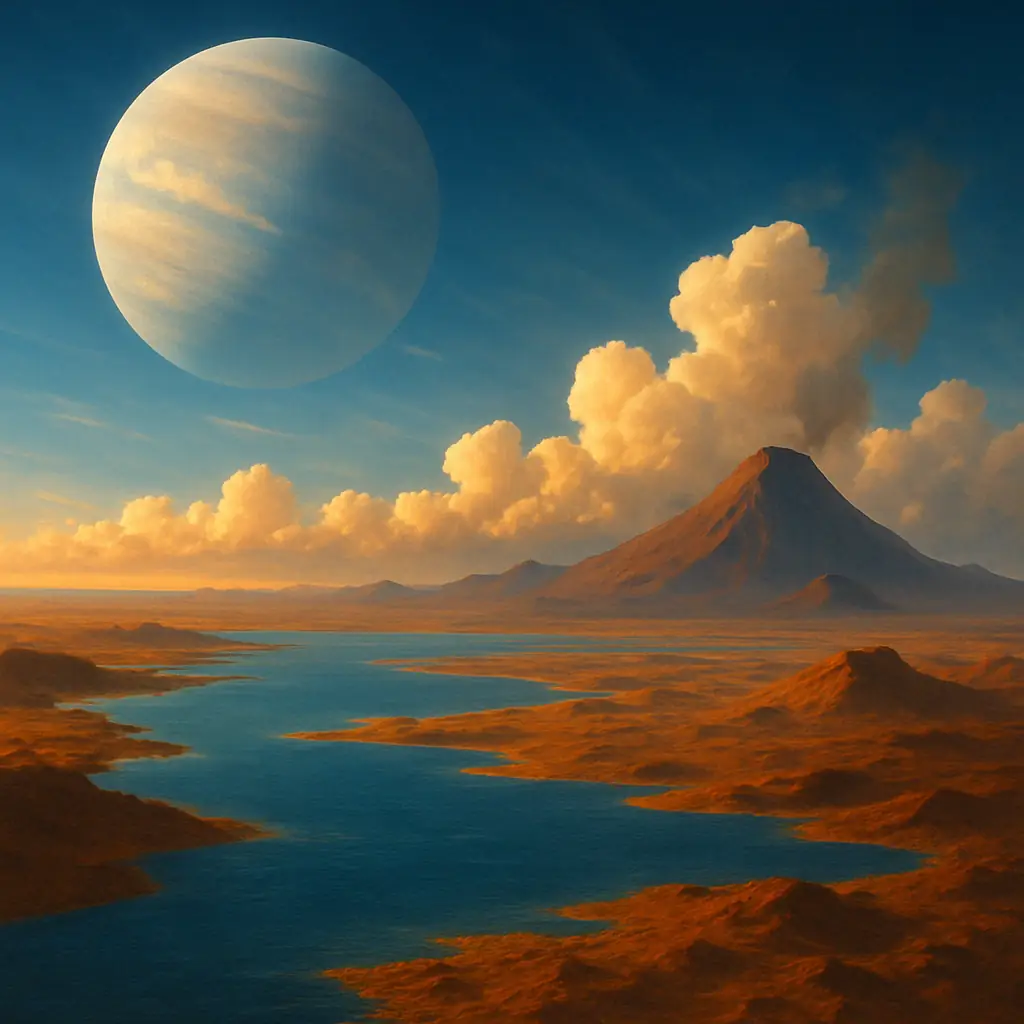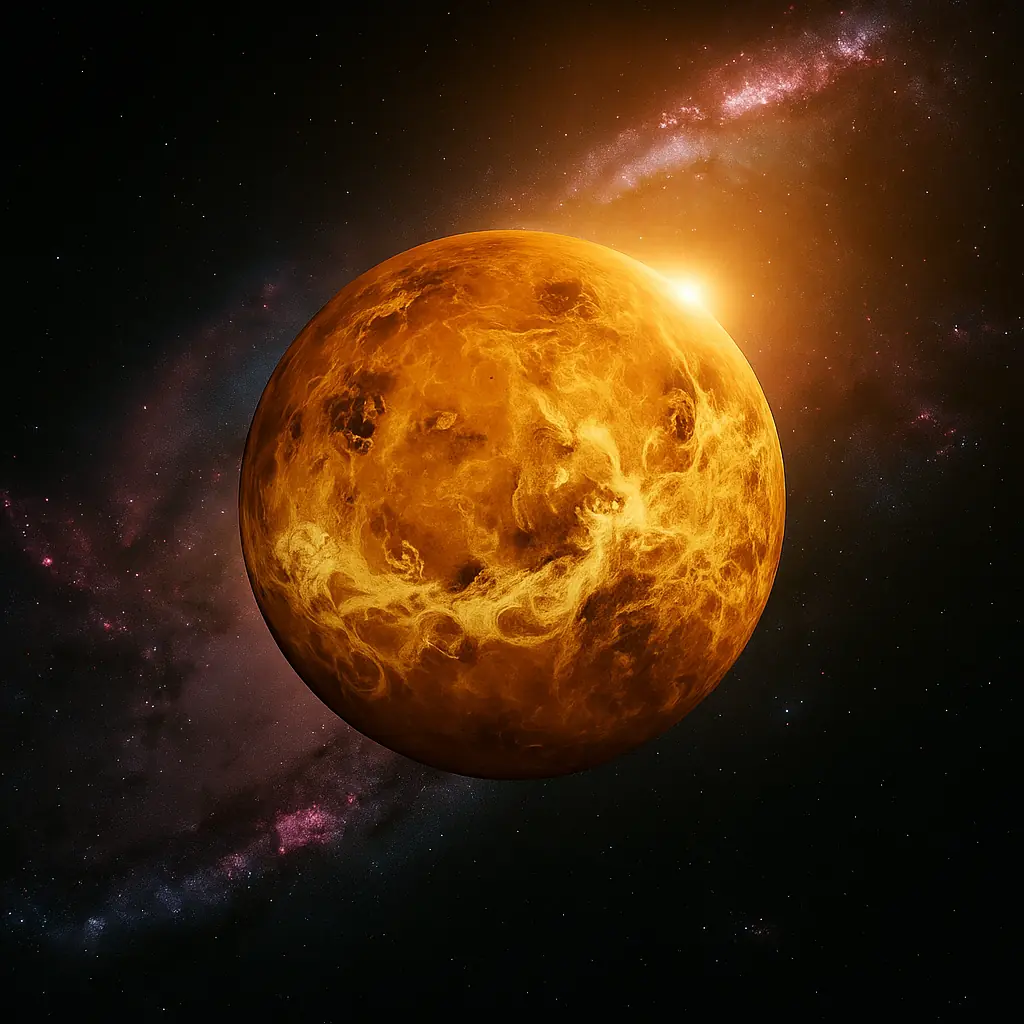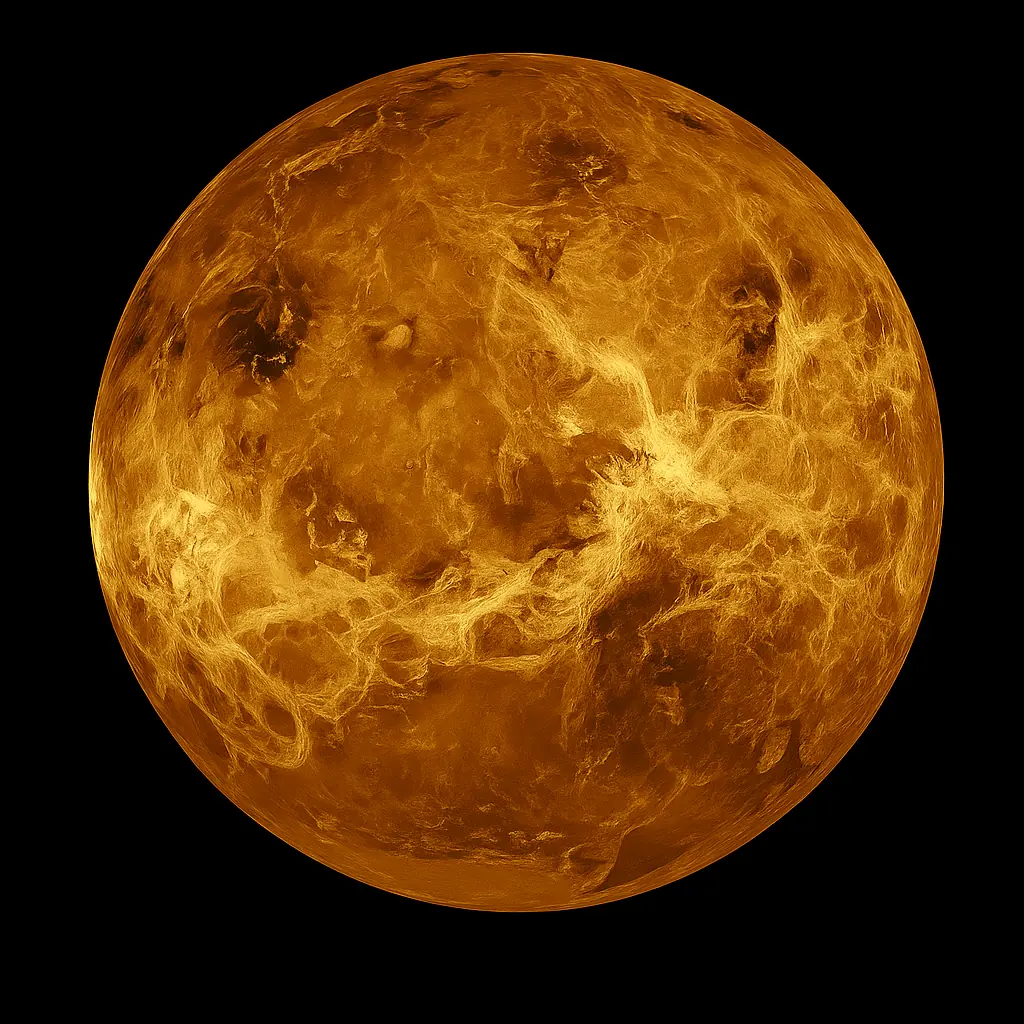Introduction
Venus, Earth’s “sister planet,” mirrors our world in size and makeup. Its calm, cloudy veil hides a fiery reality. Extreme heat and toxic clouds mark Venus. It’s the hottest planet, melting lead with ease. Its closeness to Earth draws scientists’ gaze. New findings, like phosphine in its air, ignite curiosity. Signs of ancient oceans hint at a lost past. Could life have once flourished here? Might it linger still? In 2025, missions stand ready to probe Venus’s secrets. This article dives into its traits, discoveries, exploration tales, and life’s possibilities. Venus offers clues to Earth’s fate. It also sparks dreams of life beyond our world.

Physical Characteristics of Venus
Venus rivals Earth in size. Its diameter is 12,104 kilometers. The mass reaches 4.87 × 10^24 kilograms, slightly less dense. Orbiting 108 million kilometers from the Sun, it circles every 224.7 Earth days. Venus spins slowly, taking 243 Earth days for one rotation. It turns backward, unlike most planets. This retrograde rotation is unique.
The surface is a brutal place. Temperatures climb to 462°C (863°F). Pressure equals 92 times Earth’s, like 900 meters underwater. The atmosphere holds 96.5% carbon dioxide. Nitrogen traces linger. Sulfuric acid clouds shroud the planet. A runaway greenhouse effect traps heat. Venus outheats Mercury, though farther from the Sun. No magnetic field protects it. Solar winds erode the atmosphere, worsening conditions.
Radar mapping revealed a volcanic world. Vast lava plains stretch wide. Volcanic domes tower over the land. Few craters scar the surface. This points to a young terrain, reshaped 500 million years ago. Volcanoes drive Venus’s geology. Some may still erupt. Unlike Earth, Venus lacks plate tectonics. Its rigid crust stores heat, sparking eruptions. These features set Venus apart. They help us grasp how planets evolve.

Recent Discoveries About Venus
New findings reshape Venus’s story. In 2020, phosphine (PH3) appeared in its clouds. This gas, tied to life on Earth, stirred excitement. Could microbes float in the atmosphere? Later studies questioned the data. By 2025, phosphine’s source remains a puzzle. Scientists keep watching.
Signs of active volcanoes surfaced. Thermal anomalies suggest recent eruptions. Proof of fresh lava is still absent. An orbiter tracked the atmosphere’s speed. Winds race at 360 kilometers per hour. They lap Venus in four days. This super-rotation fascinates researchers. Frost-like deposits, dubbed “metallic snow,” coat highlands. Lead sulfide and bismuth sulfide form these layers.
Ancient oceans once existed, models say. Billions of years ago, Venus likely held water. A mild climate may have lasted millions of years. Habitability was possible then. A greenhouse surge changed it all. Volcanic gases choked the air. Venus turned into a scorching desert. These discoveries fuel debate. They push us to rethink life’s chances.

Exploration of Venus
Venus has lured explorers for decades. In 1962, a NASA probe flew by. It gave the first close glimpse. Soviet missions landed in the 1970s. They sent back surface images. The harsh heat crushed probes fast. From 2005 to 2014, a European mission studied the air. A Japanese orbiter, active since 2015, tracks clouds and winds.
Future missions promise more. NASA’s DAVINCI+ launches in the mid-2020s. It will plunge through the atmosphere. The probe will study gases and snap images. Another NASA mission, VERITAS, will map the surface. Radar will detail volcanic history. Europe’s EnVision, set for the 2030s, uses radar and spectroscopy. It will probe terrain and air shifts. Russia’s Venera-D, due in the late 2020s, pairs an orbiter with a lander. These missions chase Venus’s past and life’s potential.
Early probes struggled. Heat and pressure wrecked them. New tech boosts our reach. Each mission builds on older ones. They weave a richer tale of Venus. Exploration fuels our quest. It shapes how we seek life elsewhere.

Life on Venus: Past, Present, and Future
Could Venus have hosted life? Scientists are hooked. Water likely flowed for 3 billion years. Oceans lasted until 700 million years ago. Ancient plate tectonics shaped a livable world. Volcanoes roared back then. A massive upheaval hit 500 million years ago. Volcanism remade the surface. Evidence of past life vanished.
What broke Venus? A greenhouse effect spiraled. Eruptions spewed carbon dioxide. Oceans boiled off. The air grew thick. Heat soared. The surface became a dead zone. No known life could endure it. Crushing pressure and fire rule today.
Hope lies above. At 50 kilometers up, the air feels Earth-like. Microbes might drift in clouds. Phosphine, spotted in 2020, hints at this. It’s a possible life marker. Dark cloud streaks soak up ultraviolet light. Could they be alive? Some say chemicals, not life, explain it. In 2025, the question lingers. More tests are coming.
Venus’s collapse began with volcanoes. Gases flooded the air. Heat trapped inside. The climate tipped fast. Can life return? The surface is a lost cause. Clouds offer a slim chance. Microbes might adapt to acid. They could feed on ultraviolet light. Such life would be alien. It would defy Earth’s norms.
Missions will hunt for clues. DAVINCI+ will test cloud chemistry. VERITAS will trace surface tales. EnVision will scan air patterns. Venera-D will dig into the ground. These could spot life signs. They might confirm old or current life. Humans won’t settle the surface. It’s too fierce. Cloud-based habitats are a dream. Airships might float in mild zones. These plans face huge hurdles. They’re far from reality. Venus’s life riddle endures. It sparks wonder and drives probes.
Venus warns us. Its climate crash echoes Earth’s risks. Runaway gases could doom us. Studying Venus guides our planet’s care. It also shapes exoplanet hunts. Other worlds may mirror Venus. It’s a key to cosmic life.

Leave a Reply